[Global Research Trends] 5. Top 10 Publications & Total Citations Countries on Smart Factory (2010-2024)
![[Global Research Trends] 5. Top 10 Publications & Total Citations Countries on Smart Factory (2010-2024)](/content/images/size/w1200/2024/09/Scinapse-Trends_5.png)
/ Scinapse Trends Series #5
‘Scinapse Trends’ will be updated bi-weekly on Fridays with research trends to make the researcher's journey easier.
In this Scinapse Trends edition, we will explore Smart Factory, which has recently emerged in the manufacturing sector. A Smart Factory aims to maximize production efficiency by integrating automation, digitalization, and ICT. Technologies such as IoT, AI, big data, cloud computing, and robotics monitor and control the production process in real-time, optimizing decision-making and production efficiency.
As Digital Transformation(DT) in the manufacturing industry accelerates, Smart Factories have emerged as a key to the Fourth Industrial Revolution. This rise is due to cost reduction, maximized productivity, enhanced efficiency, and competitiveness. Additionally, the COVID-19 pandemic has driven the need for remote monitoring, automation, and reduced dependency on human labor, enabling flexible production systems that can quickly adapt to changing environments.
As the Smart Factory research field evolves rapidly, analyzing research quality (average first-year citations) and quantity (publications) helps us understand the latest technological advancements and research trends. By examining citation patterns, we can analyze collaboration and connections between studies, identify the speed of innovation and focus areas, and assess how research outcomes can be applied to real-world practices.
Research Quality & Quantity Performance Trends for Smart Factory (2010-2024)
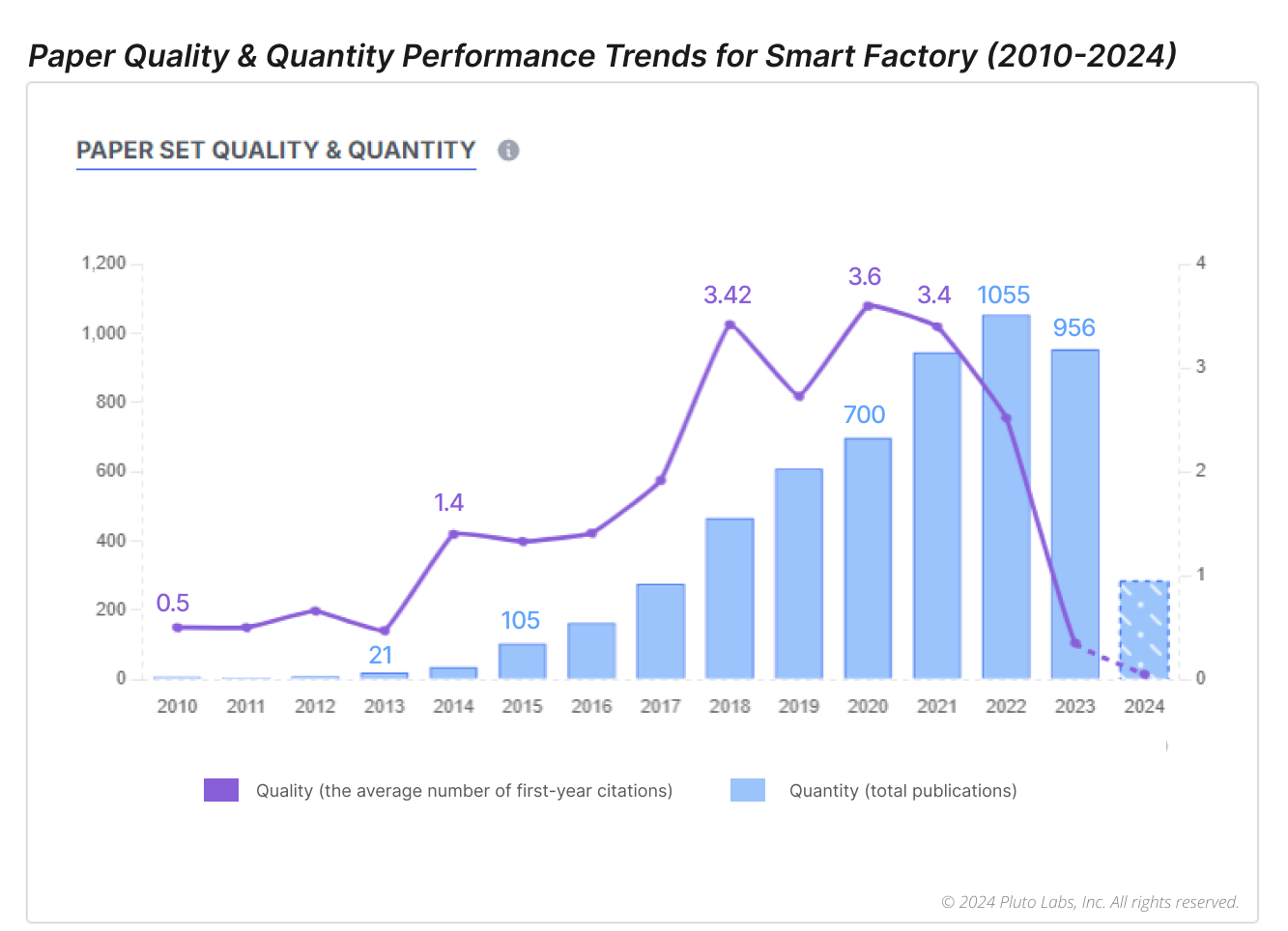
When analyzing research trends in a specific field, looking at the total number of publications and citations can help determine whether the technology or research area is rising. When you use Scinapse, exploration of research trends becomes easier than ever.
In particular, citations are an important indicator of the impact of research, as they show how much trust a study or technology has gained and what problems it has addressed, making them highly meaningful.
The number of publications on Smart Factories was relatively small in the early 2010s; however, starting from 105 papers in 2015, it experienced dramatic growth, reaching about 700 papers by 2020, representing nearly a sevenfold increase. Over the past decade, the field has shown a compound annual growth rate (CAGR) of 61%. In 2022, with 1,055 publications, the field saw the most active research, driven by the accelerated global digital transformation (DT) of the manufacturing sector following the COVID-19 pandemic.
Although citations dropped from an average of 3.29 between 2018 and 2021 to 2.52 in 2022, the dramatic growth in publications highlights the rising influence of the Smart Factory research field.
Top 10 Leading Countries in Smart Factory Research by Total Publications & Citations (2010-2024)
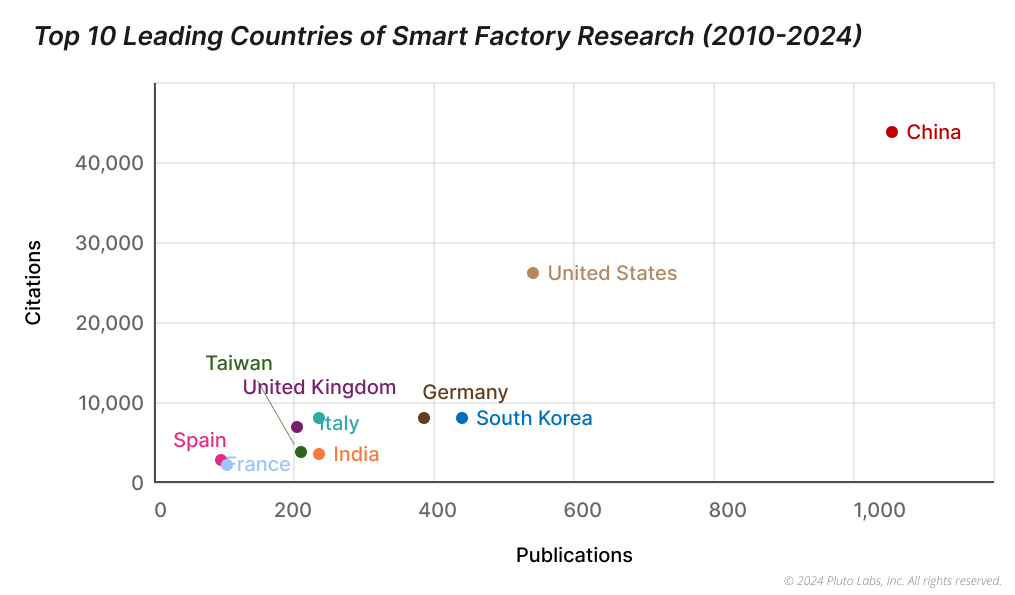
Note : The graph represents total citations, not first-year citations, and is based on the sum of all citations that occurred between 2010/01/01 and 2024/05/31 .
Meanwhile, if you examine these research trend metrics by country, it is clear that China dominates both in research volume as well as impact. Over a duration of 15 years from 2010 to 2024, China recorded 1,035 publications and 44,089 total citations, demonstrating both quantitative and qualitative achievements.
The U.S. follows with 585 publications, while South Korea and Germany have 485 and 390 publications, respectively. In terms of citations, the U.S. has 25,196 citations, and South Korea and Germany have 8,580 and 8,450 citations, respectively. These countries form a top tier, conducting active research in the field. Italy, while slightly behind these countries, also shows strong research output with 274 publications and 8,517 citations.
Though not as high as the mentioned countries above, India, Taiwan, the UK, Spain, and France also rank among the top 10 countries in terms of publications, contributing to global research. On the other hand, while their publication numbers are relatively lower, countries like Australia (3,688 citations), Sweden (3,337 citations), and Singapore (3,325 citations) are ranked within the top 10 for having high citation counts, reflecting the strong qualitative impact of their research.
How Has Smart Factory Evolved Over the Past Years?
So what kind of actual research content has changed and developed over the last 3, 5, and 7 years? Over the past few years, Smart Factory has been progressively focusing on Industry 4.0 technologies, AI, digital twins, and IoT to optimize manufacturing processes for sustainability and innovation.
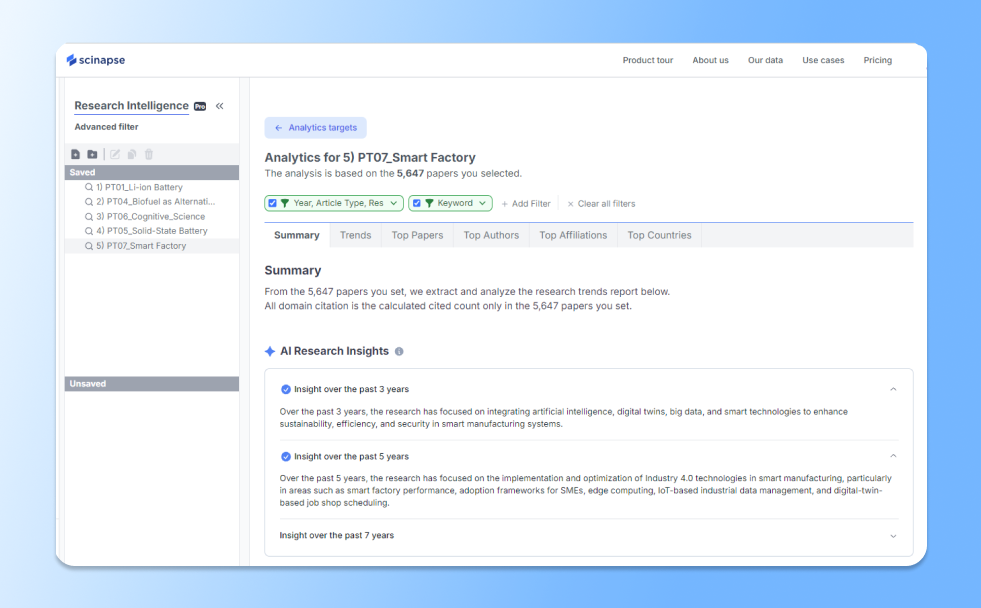
Over the past 7 years, the research in Smart Factory has explored key Industry 4.0 technologies like digital twins and cyber-physical systems, focusing on their application in smart manufacturing across various industries for enhanced performance and innovation in manufacturing processes.
In the last 5 years, studies have emphasized Industry 4.0 adoption frameworks with IoT-based data management, and AI-driven solutions to optimize smart manufacturing processes for sustainability and efficiency with sustainable approaches. For the last 3 years, the research has focused on integrating artificial intelligence (AI), digital twins, and big data to enhance the sustainability, efficiency, and security of smart manufacturing systems.
The “AI Research Insights✨” shows how research has been conducted and progressed within your search criteria over the last 3, 5, or 7 years.
👇🏻If you need more information from Research Intelligence, try it here.
Data source - Scinapse / Topic advised by RI Team
Written by Geehee Nahm
For Previous Scinapse Trends 🔽
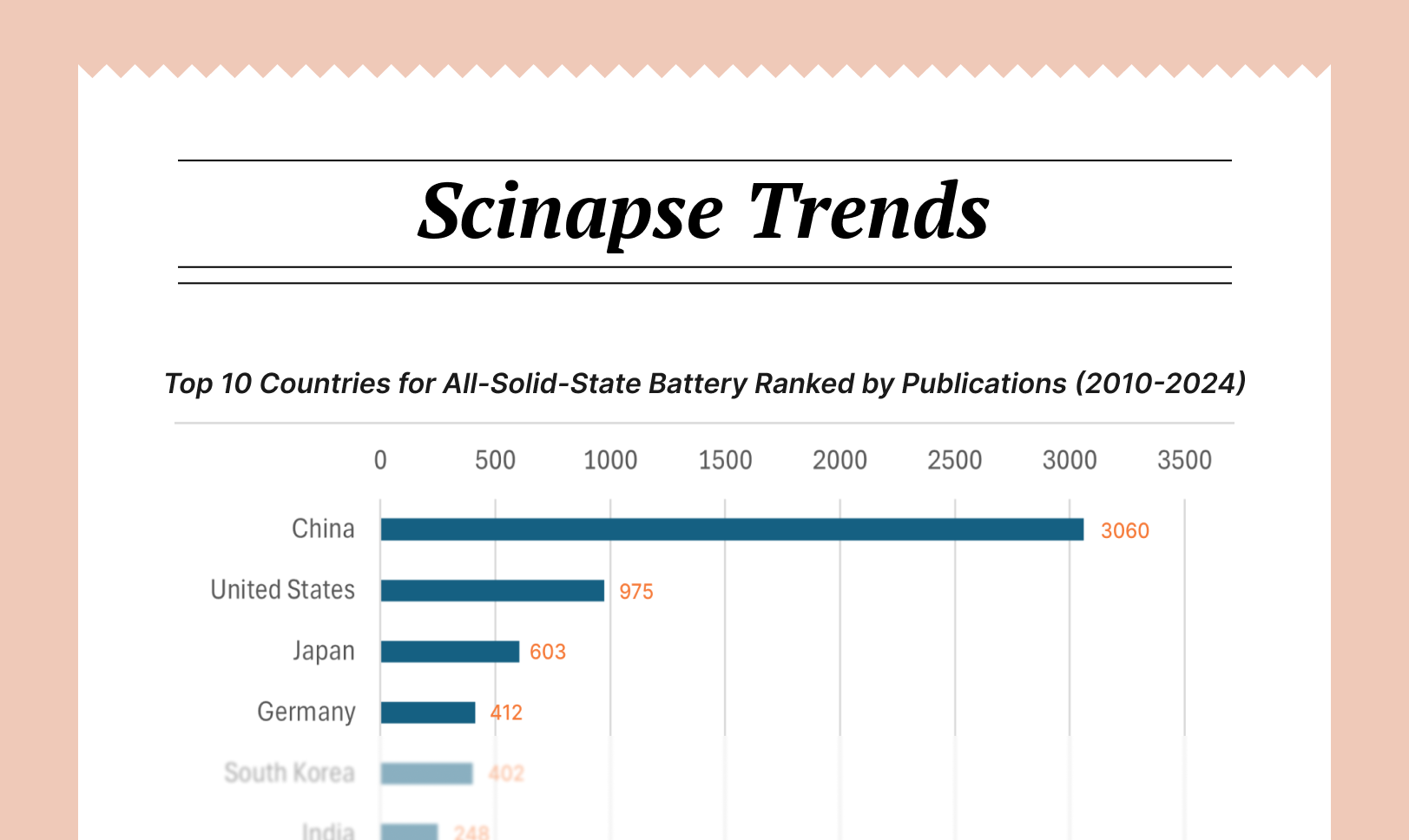
Never re-search again.
Scinapse is made by researchers for researchers.
Join the next generation of research at ⏯️ https://scinapse.io/
Pluto Labs
Pluto Labs helps researchers focus on their research by improving several inefficiencies in the academic research process. We offer data-driven insights from academic papers, allowing users to easily obtain review-level results for their desired range of papers.
https://pluto.im/

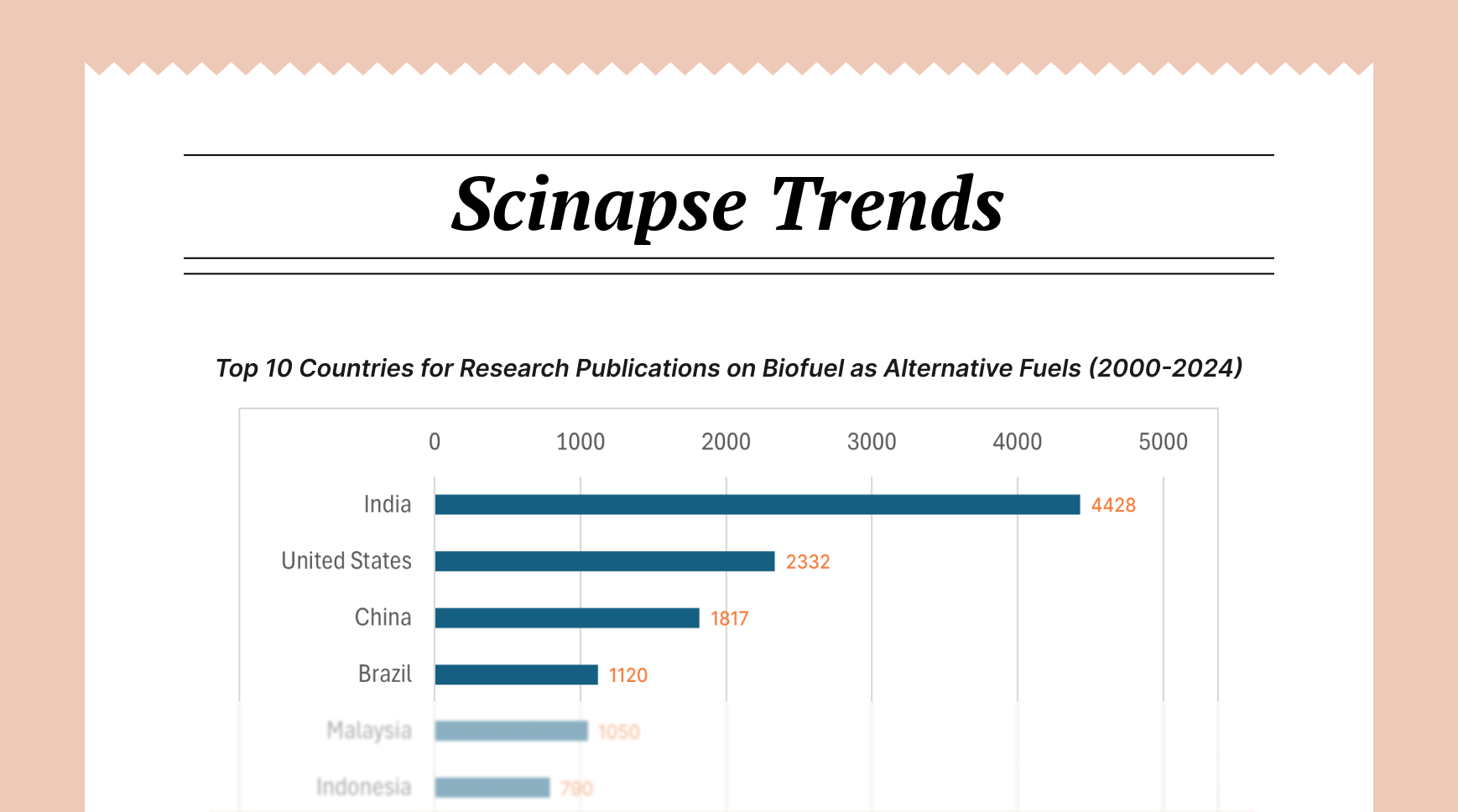

![[Global Research Trends] 10. Top 10 Countries on Microneedle Research Publications (2014-2024)](/content/images/size/w720/2024/11/Scinapse-Trends_10.png)
![[Global Research Trends] 9. Top 10 Countries on FOWT Research Publications and Authors' Normalized h-Index (2014-2024)](/content/images/size/w720/2024/11/Scinapse-Trends_9--1-.png)
Comments ()